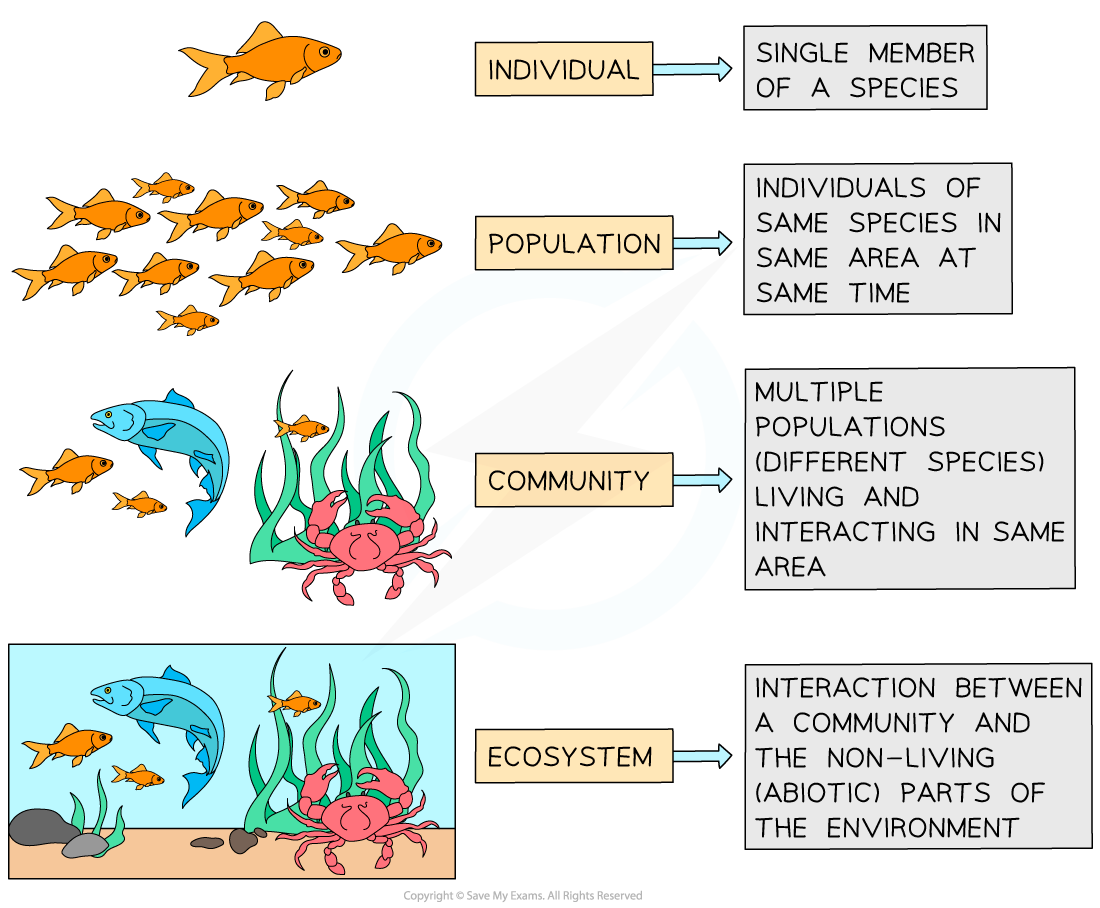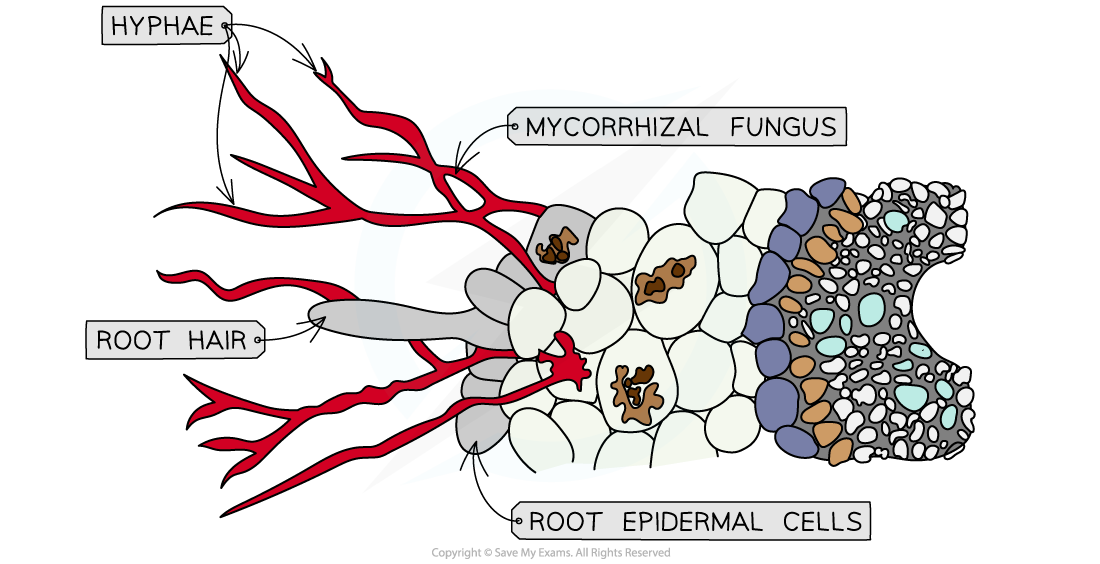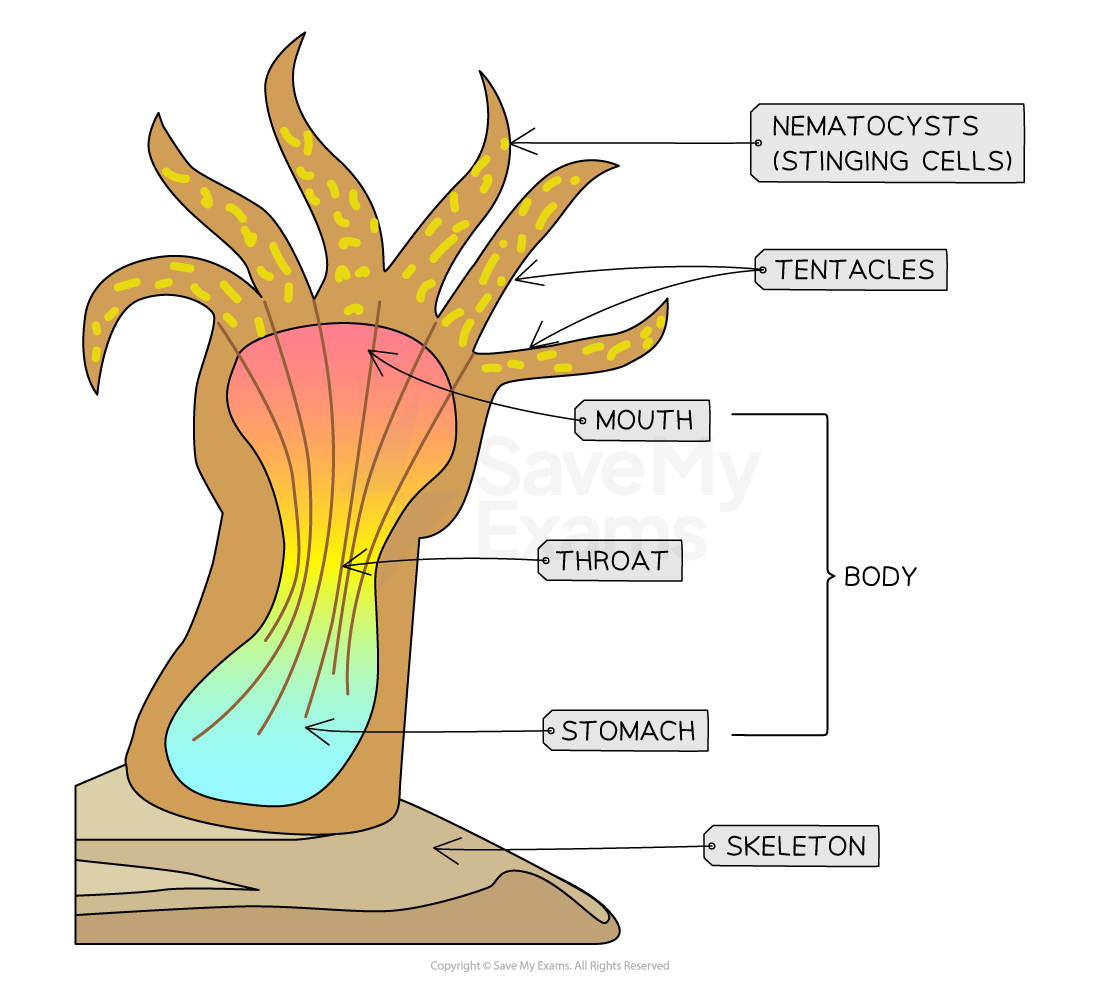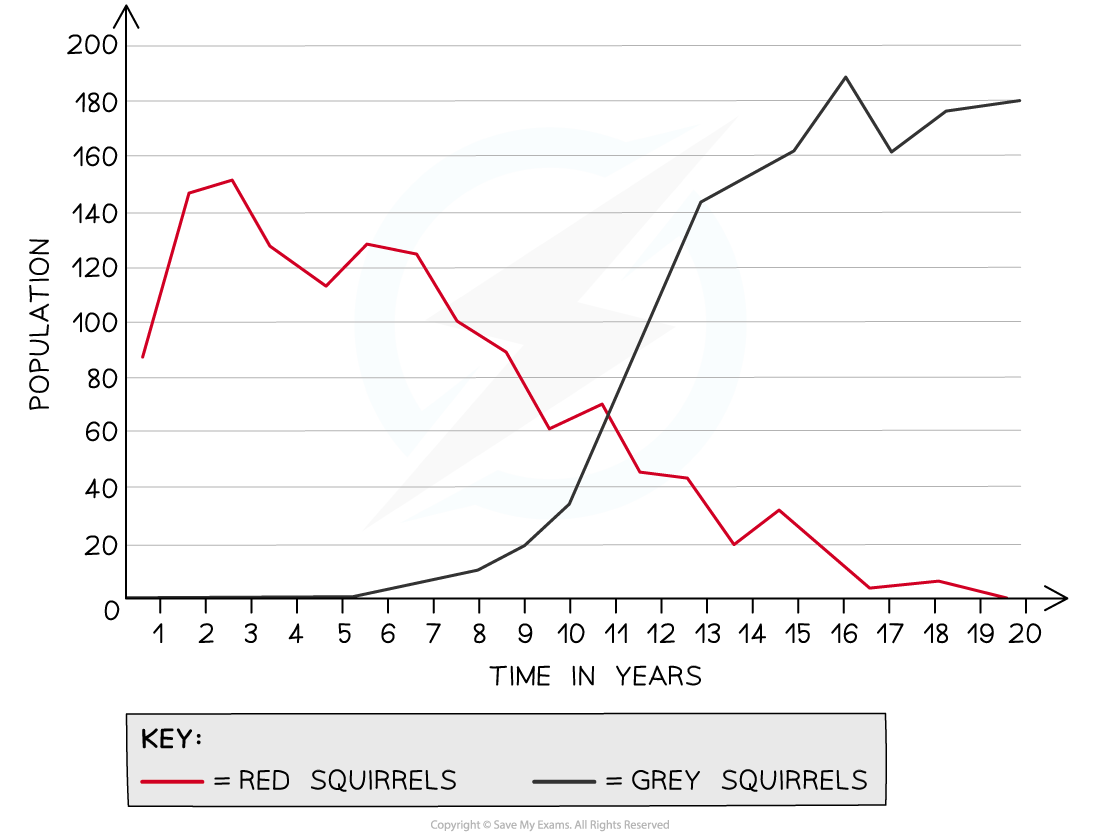Community: Interspecific Relationships (DP IB Biology): Revision Note
Community in an Ecosystem
Species do not exist by themselves in their own isolated environment; they interact with other species, forming communities
A community can be defined as:
Multiple populations of different species living and interacting in the same area
For example, a garden pond community is made up of populations of fish, frogs, newts, pond snails, damselflies and dragonflies and their larvae, pondweed, water lilies, and all other populations living in the pond
Communities include populations from all groups of living organisms, e.g. plants, animals, fungi, and bacteria
Living communities interact with their abiotic environment to form an ecosystem

Interspecific Relationships within Communities
Interspecific relationships are the interactions between different species that occur within a community
'Inter' = between
There are several types of interaction that can occur between different species:
Type of interaction | Description | Example |
|---|---|---|
Herbivory | An organism feeding on a plant | Cattle graze on grass Sea turtles feed on sea grass Honeybees consume nectar and pollen |
Predation | An organism catching and consuming an animal, or consuming a recently dead animal | Dolphins catch and eat fish Lions hunt and eat zebra Red kites eating roadkill |
Interspecific competition | Organisms of different species compete for the same resources | Oak and beech trees compete for light and minerals Lions and hyenas compete for prey Red and grey squirrels compete for food and territory |
Mutualism | Organisms of different species work together for the benefit of both | Pistol shrimp share their burrows with goby fish, which provide a warning when predators are near Oxpecker birds remove parasites from large mammals, providing the birds with food |
Parasitism | A parasite organism lives in or on a host organism, causing its host harm | Mistletoe plants grow in the branches of trees, taking water and nutrients from their hosts Fleas live on the bodies of mammals, feeding on their blood |
Pathogenicity | An infectious microorganism (pathogen) lives inside a host organism, causing disease | Mycobacterium tuberculosis bacteria cause the disease tuberculosis in human hosts Dutch elm disease is caused by a fungal pathogen that causes elm trees to lose their leaves and die |
Mutualism
Mutualism occurs between members of different species, and is an example of cooperation; both members of a mutualistic relationship benefit from the interaction
Examples of mutualism include
Bacteria living in the root nodules of plants
Mycorrhizal relationships between fungi and plants
Coral polyps and algae
Root nodules in Fabaceae
The Fabaceae, or legume, family of plants includes species of peas, beans, and clover
Many legumes have a symbiotic relationship with bacteria, which live in nodules attached to the plant roots
Nodules are small, sphere-like structures
The bacteria convert nitrogen gas in the air into ammonia (NH3) which can then be converted again into nitrates
The conversion of nitrogen gas into a form that is useful to plants is known as nitrogen fixation
Rhizobium is an example of a genus that lives in root nodules and fixes nitrogen
Nitrates can be used by plants to build essential biological molecules such as proteins and nucleic acids
The bacteria also benefit from this relationship, as they gain carbohydrates that are produced by the plant in photosynthesis
Mycorrhizae in Orchidaceae
Many plants have evolved symbiotic relationships with fungi
The fungi form long, thin filaments known as hyphae, which interact with the roots of the plants
These hyphae greatly increase the surface area of the root systems of the plants, increasing the amount of water and mineral ions that can be absorbed by the plant roots
In return the fungi receive organic compounds, e.g. glucose, from the plant
These relationships between plant roots and fungi are known as mycorrhizae (singular mycorrhiza)
Mycorrhizae diagram

The orchidaceae, or orchid family, are known to form many mycorrhizal relationships, e.g.
Orchid seeds may gain the nutrients needed for germination from mycorrhizae
Some unusual orchids are unable to photosynthesis, relying on their mycorrhizal fungi to break down dead matter in the soil and provide them with all of their nutrients
The orchid in this relationship is a heterotroph and not an autotroph
The orchid does not benefit from this relationship until the orchid dies, at which point it can access the biological molecules in the orchid's tissues by decomposition
Zooxanthellae in hard corals
The coral reefs associated with the hard corals are produced by tiny animals known as coral polyps, which live in a symbiotic relationship with zooxanthellae algae
Polyps are in the phylum cnidaria, along with jellyfish and sea anemones
Their soft bodies have tentacles which contain stinging cells called nematocysts, and which also contain the zooxanthellae cells
The polyps secrete calcium carbonate which forms the hard structure of the coral skeleton
The polyp's body provides shelter and protection for the algae
The algae carry out photosynthesis and produce carbon compounds, such as carbohydrates, which can be used by the polyp
Coral polyp diagram

Examiner Tips and Tricks
Note that Latin names, e.g. Fabaceae, are not essential when answering exam questions; you will be credited for either Latin or common names of organisms.
Resource Competition: Endemic & Invasive Species
An invasive species is a non-native species that causes harm to the environment to which it has been introduced
Invasive species are sometimes referred to as alien species
An invasive species can occur naturally as a result of a species migrating or expanding their habitat, but most recorded incidents of invasive species have been caused by humans, e.g. humans have:
Knowingly collected and traded species between countries
E.g. bringing attractive plant species into gardens, or animals into zoos or as pets, which then escape into the wild
Unknowingly provided transport for invasive species to a new ecosystem, e.g. rats on board ships
Introduced alien species deliberately as biological control for pests
In a new ecosystem invasive species will have little or none of the natural population controls that existed in their previous ecosystem:
They will have no natural predators or competitors
As a result they are able to increase in number at a rapid rate
This can affect the processes within an ecosystem
Competition may occur between invasive species and native species that occupy a similar niche, with the native species getting displaced or pushed to extinction
Many invasive species can be successful predators, causing a massive decline in their prey species
Invasive species can introduce new diseases, to which the native species have no natural immunity


Invasive species & endemic species
Endemic species are found in a particular place and in no other location in the world, e.g. the Scottish crossbill is found in the conifer forests of Scotland and nowhere else, so is said to be endemic to Scotland
Endemic species are especially vulnerable to the effects of invasive species, as local extinction will mean that the species has gone entirely extinct
E.g. Australia is home to many endemic species that have evolved over many years of isolation from other continents
The introduction of invasive predators, such as the European red fox and the domestic cat, has caused huge declines in native Australian species
The red fox was introduced in the 1800s by European settlers for the purposes of fox hunting
Cats are likely to have travelled on ships and been introduced by accident
Evidence suggests that more than 10 % of Australia's endemic mammal species have already gone extinct since the arrival of European settlers
Small mammals are at the highest risk due to being the best food source for the invasive predators
Some species now only survive on the islands around mainland Australia where foxes and cats have not yet arrived

Unlock more, it's free!
Did this page help you?